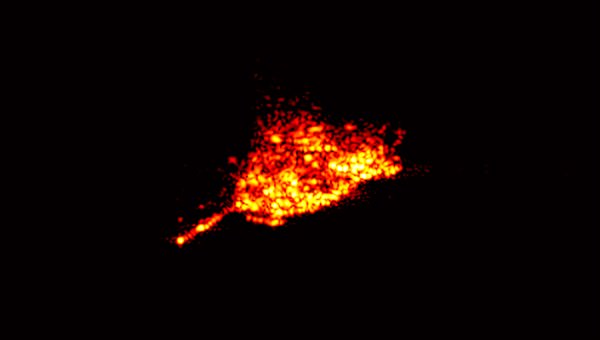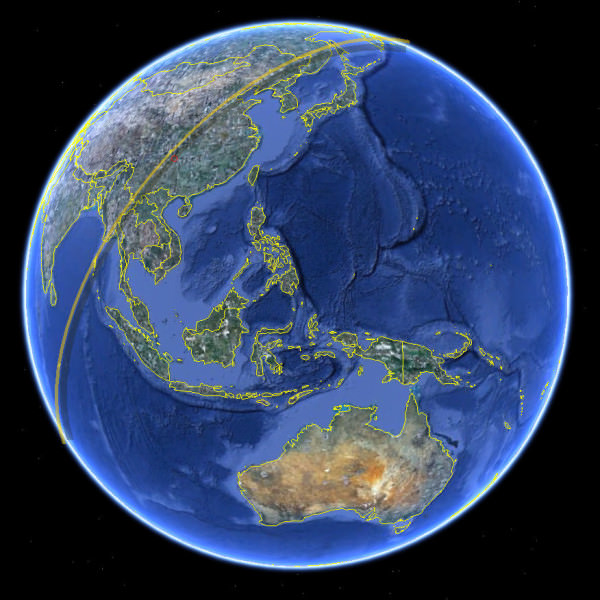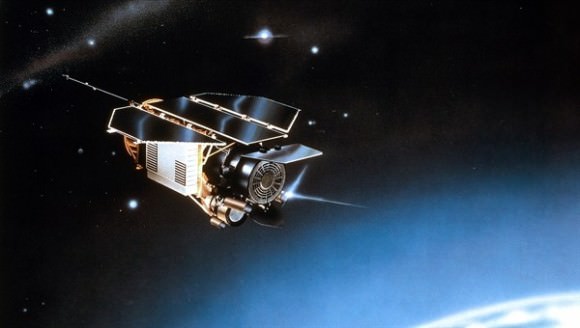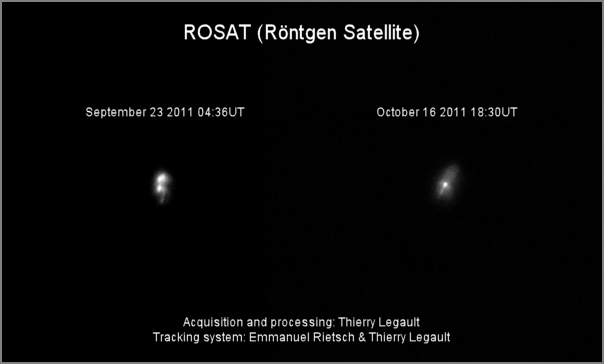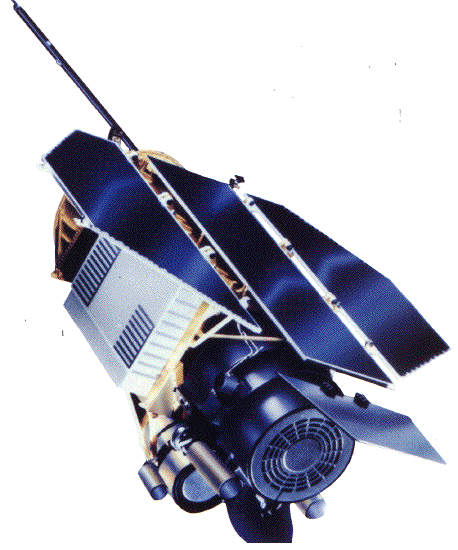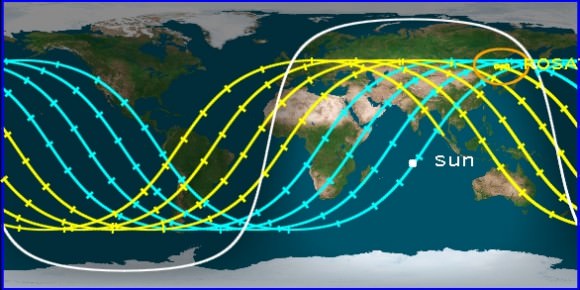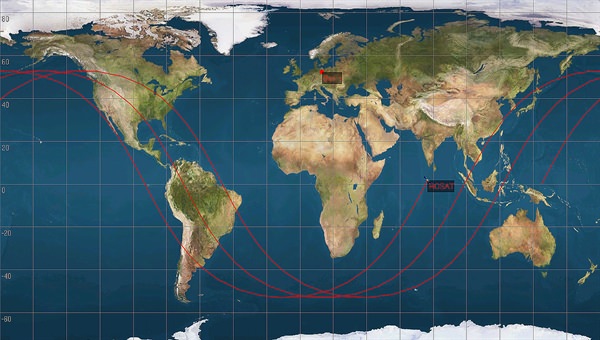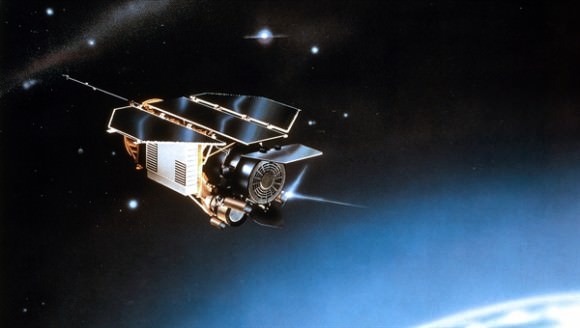[/caption]
The German Aerospace Center (DLR) has identified the ROSAT’s satellite final resting place as the Bay of Bengal, off South Asia. The minivan-sized satellite re-entered the atmosphere at 0150 GMT on Sunday, October 23, 2011 (9:50 p.m. EDT on Oct. 22) and any pieces of the 21-year old satellite that survived the fiery trip likely crashed into the water. However, the ROSAT_Re-entry Twitter feed reports there is still some ambiguity, and re-entry likely took place sometime between 01:50 and 01:51, with error bar of plus or minus 7 minutes. That could make a huge difference in where debris landed. (Updated with new map, below.)
No sightings of any debris have been reported. Most of ROSAT’s parts were expected to burn up in the atmosphere, but up to 30 fragments weighing a total of 1.87 tons (1.7 metric tons) may have crashed.
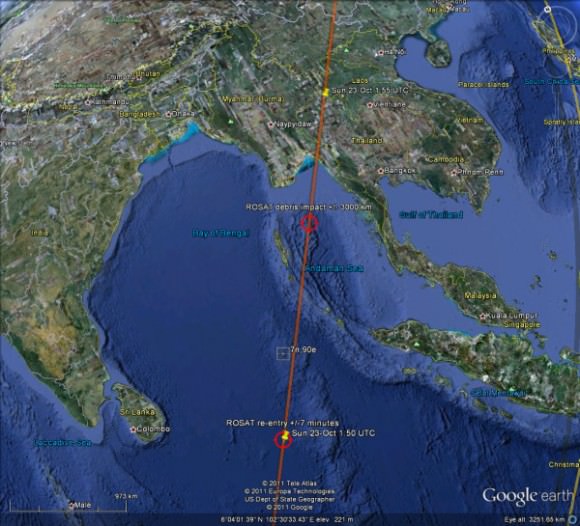
The Bay of Bengal is located between India and Myanmar.
Yesterday, some estimations put the satellite as possibly re-entering over Northern Thailand, but again, no debris was reported. DLR now says the more precise determination of the time and location of re-entry was based on the evaluation of data provided by international partners, including the USA’s Space Command.
“With the re-entry of ROSAT, one of the most successful German scientific space missions has been brought to its ultimate conclusion. The dedication of all those involved at DLR and our national and international partners was exemplary; they are all deserving of my sincere thank you,” said Johann-Dietrich Wörner, Chairman of the Deutsches Zentrum für Luft- und Raumfahrt (DLR) Executive Board.
Source: DLR

